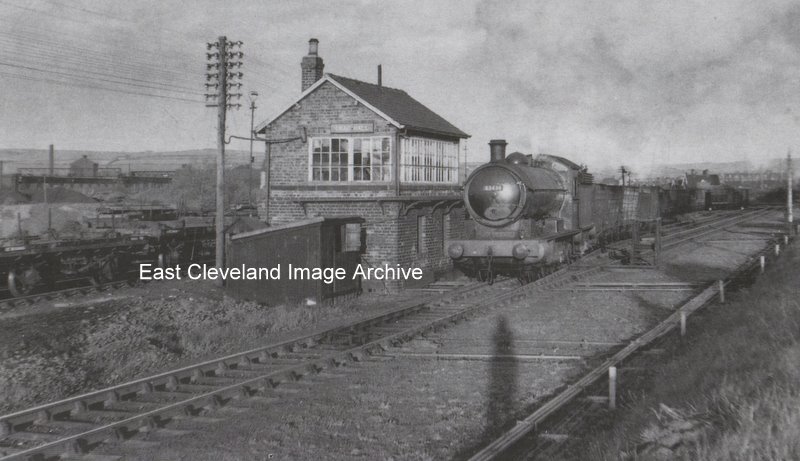
The Archive what the locomotive was as it awaits a signal change at Cragg Hall signal box in 1958; Russell Piggot has assisted in identifying the train as: “A Q6 Class 6 0-8-0.”
Thanks to Russell Piggot for the update.
|
|
||
 The Archive what the locomotive was as it awaits a signal change at Cragg Hall signal box in 1958; Russell Piggot has assisted in identifying the train as: “A Q6 Class 6 0-8-0.” Thanks to Russell Piggot for the update.
Sandsend Viaduct, with local train – was how we originally posted this image. But alas we got it wrong! – it is a view of East Row Viaduct in the 1956 with a local commuter train from Whitby approaching. Sadly this picturesque line, which skirted the coast all the way from Saltburn to Whitby and from Whitby to Scarborough, has vanished, leaving only the mineral railway from Saltburn to Boulby Potash Mine. The locomotive leading this mixed passenger/goods train is an ex-Great Central Railways Robinson A5 4-6-2 Pacific tank; well at home on this demanding coastal line. The quaint seaside shop shown in the bottom right hand corner of the image still exists, doing an excellent trade of refreshments and beach essentials, weather permitting! Mark advised us: “Sorry to be picky, but this is East Row viaduct (Sandsend viaduct being the one adjacent to the station). Having said that, goods for Sandsend were handled at East Row, the Goods Shed (just visible in the background) remained in place until the early 1990s. Parts of the viaduct’s pier foundations can still be seen on the beach.” Meanwhile the goods shed site mentioned by Mark in the background are currently being developed as an upmarket housing development by the Mulgrave Estates. Image from the Neville Stead Collection, many thanks to Mark for pointing out our mistake! 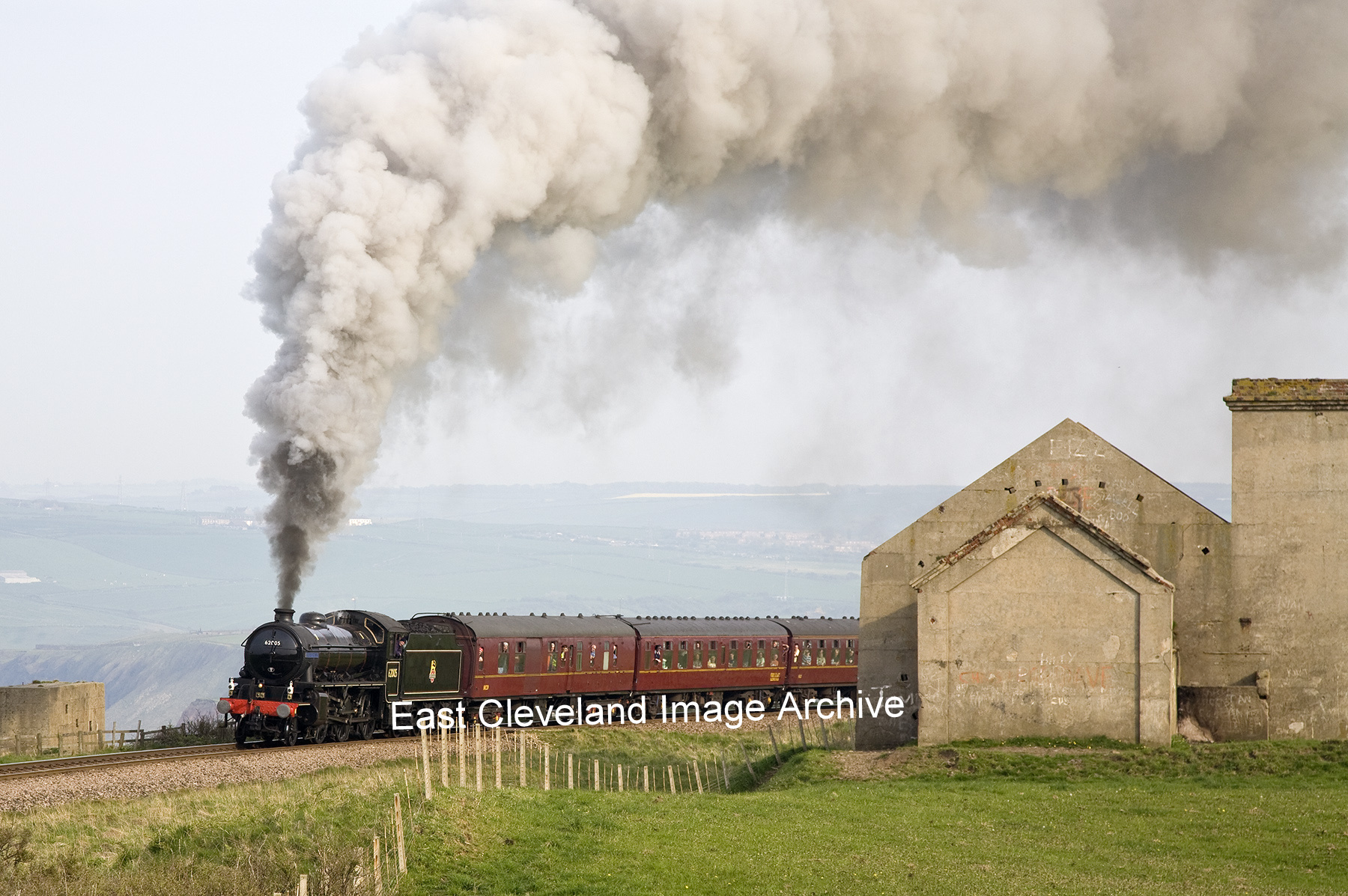 Preserved K1 Class, 62005, rounds the bend at Huntcliff, passing the remains of the old Guibal Fanhouse on a Train spotter’s Special on the 10th May 2008 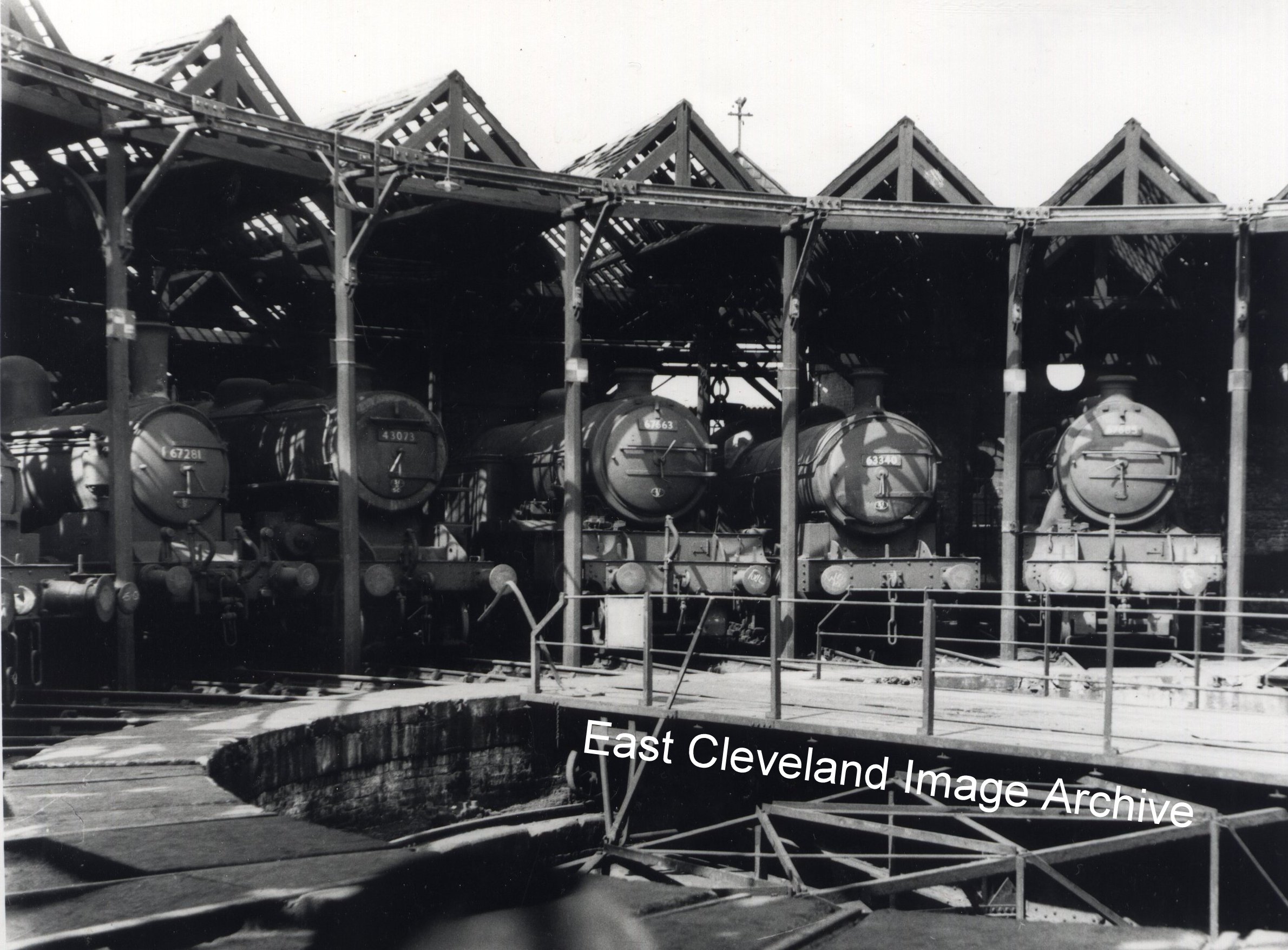 When first posted the Archive asked: “Now you train spotters out there where is this? I know you will be able to tell us, just reminds us of Thomas the Tank Engine!” Derick Pearson advised that the turntable was at Middlesbrough. Russs Pigott advised: ”The image shows (left to right) 67281; was the last surviving example of a G5, She was an 0-4-4T type. She was withdrawn by British rail in 1958. 43073. is definitely a Ivatt Class 4 and the last photograph I have of her is leaving Roose Railway station, Barrow-in-Furness in 1960. Where she ended up I do not know. 67663. Was a V1 2-6-2T Gresley. The Class V3 Gresley was introduced 1939, built on the same chassis and everything else. Appearance was much the same as the V1 but the V3 had a Higher Boiler Pressure. This one is the earlier V1. 63340. Is a Q6; it was originally a N.E.R class T2 0-8-0. Classified as a Q6 by the L.N.E.R. 120 were built at Darlington works between 1913 and 1921 to the design of Vincent Raven. They were based on the N.E.R Class T and T1- L.E.N.R – Q5s. All passed into British Railways ownership in 1948 and they were numbered from 63340 to 63459. 63372 was withdrawn in 1960 after an accident. The others were withdrawn from 1963 to 1967. Only one of them, the 63395 has survived to preservation on the North Yorkshire Moors Railway. She re-entered service after a major overhaul in 2007. 67685. Was A Gresley 3 cylinder V3. The last reference I have to her is at Battersby Junction near Gt Ayton. Hope this sorts that one out.” Image courtesy of Mike Holliday and others, also now known to have been on a CD produced by Derick Pearson. 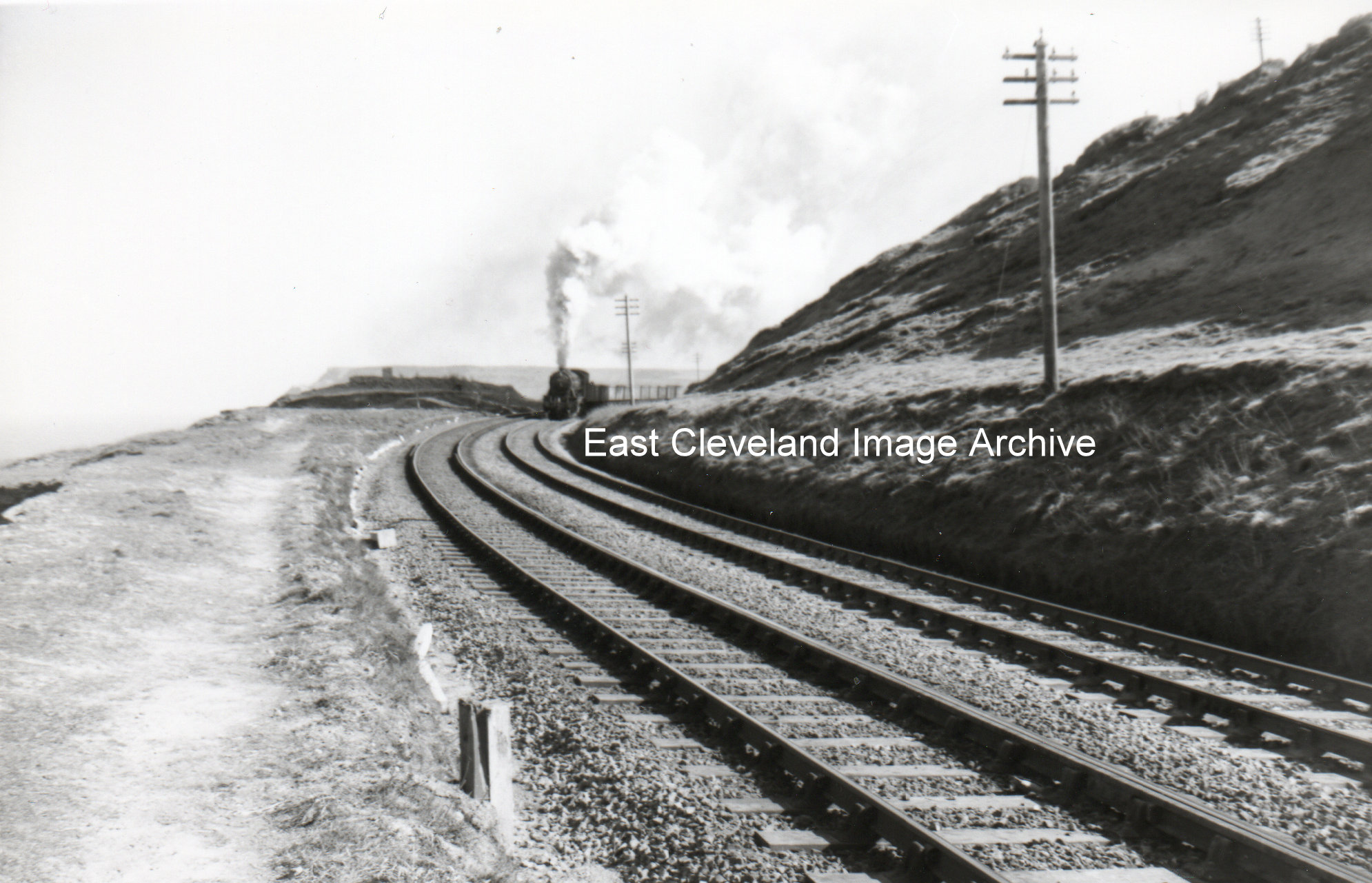 We wondered where the train was and Mark tells us: ” That’s a War Department locomotive on a train from Skinningrove at Huntcliff, roughly where the ring shaped sculpture is, making a racket no doubt, it looks windy but the exhaust is been blasted skywards.” Eric Lindsay asked: “Was the line Saltburn to Whitby all dual tech or only part ? Sandsend viaduct appears to be single track.” Terry Robinson answered the query: “The track was dual as far as Crag Hall, then was single line with passing loops at stations along the route, all the viaducts and tunnels were single line.” Image courtesy of Ted Morgan, via Eric Johnson; thanks to Mark for the update; also to Eric Lindsay and Terry Robinson for the update on dual tracking. 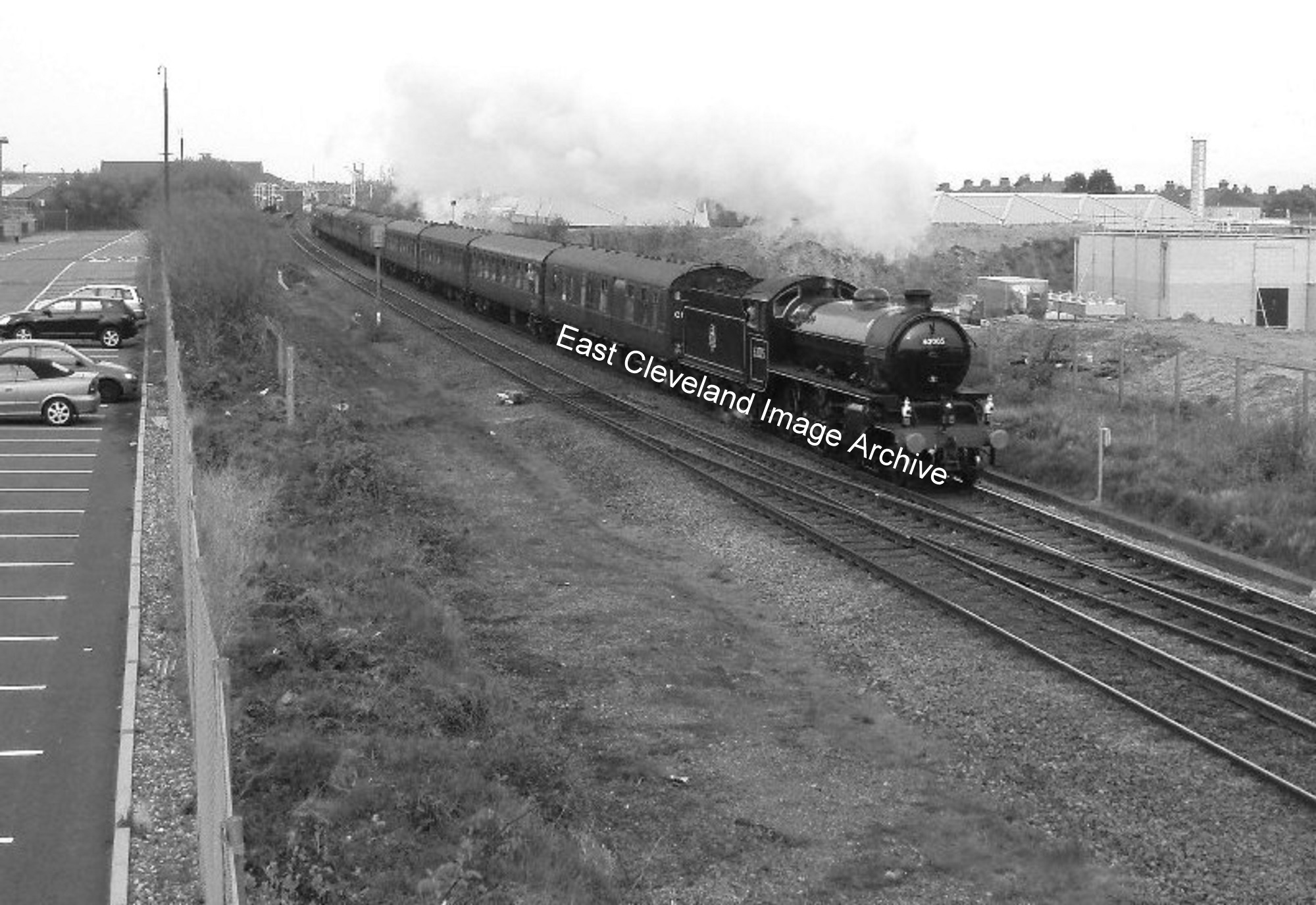 A long while later and the platform has gone, the car park has arrived and a special makes its way from Redcar towards Black Bridge. It must be a preserved locomotive on a charter run! Image courtesy of Mike Holliday. 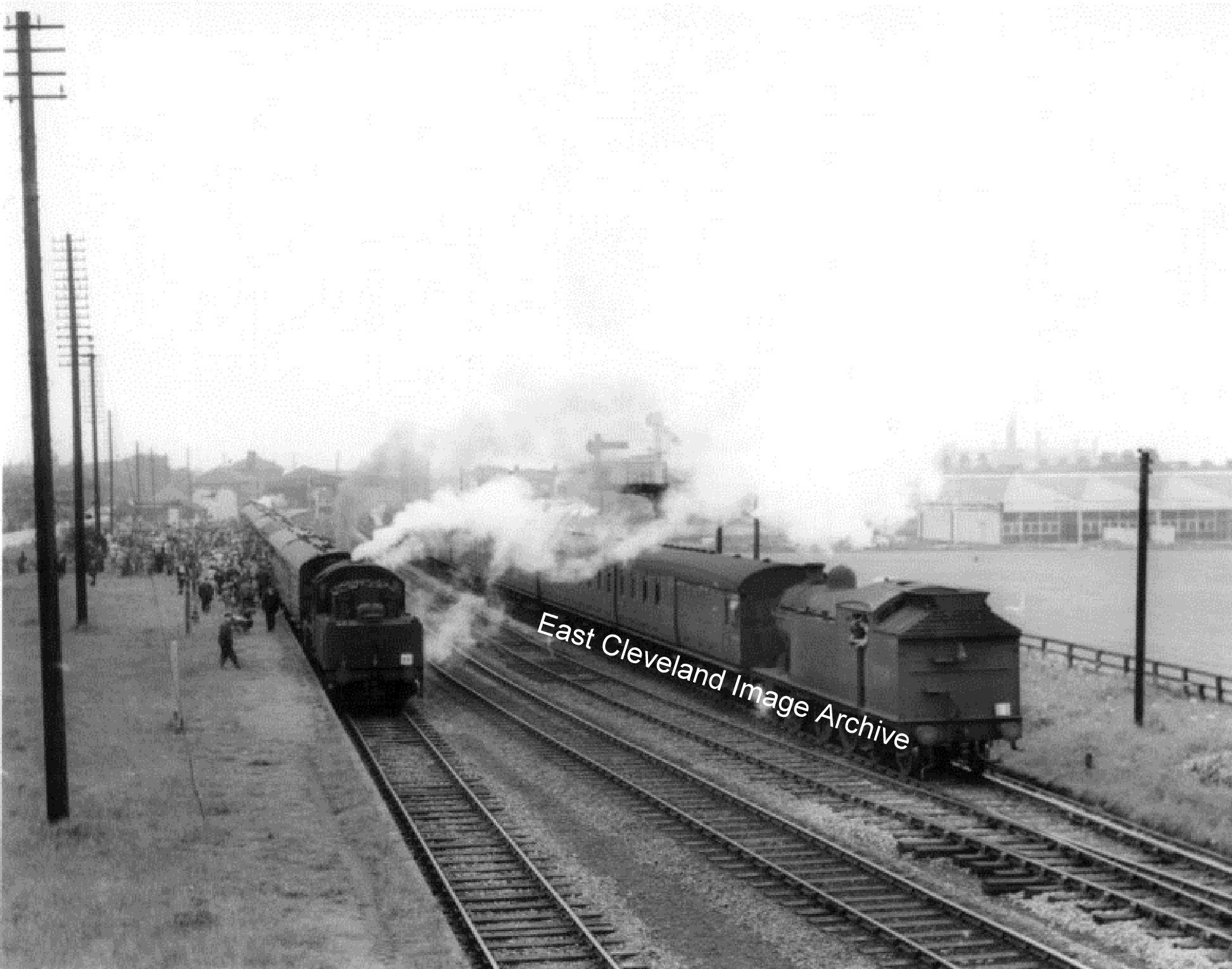 How many of you remember the excursion platform at Redcar? Well, there’s a car park there now; but in its heyday it was heaving. Redcar had a beach then; there was no deep water channel in the Tees, no Blast Furnace on the skyline and Redcar had two picture houses and a theatre! It must have been a busy day as I can count three engines in steam here as well! Image courtesy of Mike Holliday.
A pristine locomotive – another A8, number 69883 – pictured at Battersby Junction in the 1950’s. Battersby Junction is now a station on the Middlesbrough to Whitby, Esk Valley line; it was originally the junction for the line which connected with the Rosedale ironstone mines. Location identification courtesy of Simon Chapman.
Simon Chapman has advised: “This is quite a well-known picture of North Skelton Junction. The train, hauled by a J27, is coming down the gradient from Brotton towards Saltburn. The line to the right served North Skelton Mine but had originally gone through to Priestcrofts Junction near Boosbeck.” Chris Davies advises:”Engine number would be in the 65780-65894 range as it is of BR Class J27 0-6-0.” Re-posting the image has enabled the Archive to advise that the engine number is 65788. Thanks to Simon Chapman and Chris Davies for this information; also thanks to Ian Pearson for noticing the slip of the fingers in entering the locomotive number.
We wonder whether that first coach of this train made it to preservation? The locomotive a Raven/Gresley A8 4-6-2T 69862 didn’t, it was cut up at Darlington in 1958. |
||
Recent Comments